Apple Watch vs Android Wear: Smartwatch OS Comparison
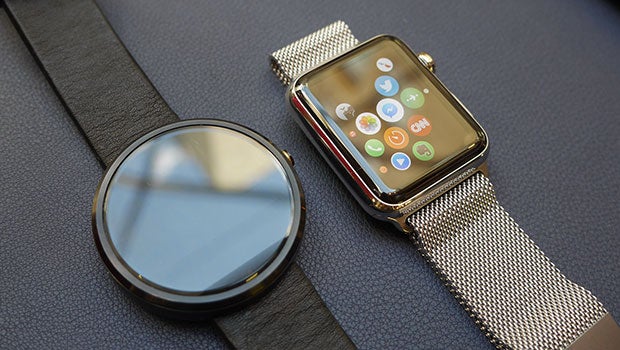
Apple Watch or Android Wear watch? We compare smartwatch platforms
Despite arriving at the wearables party relatively late, the Apple Watch has already established itself as the smartwatch to own. Even supply issues couldn’t hold it back, with Apple reportedly managing to flog more units in a day in the US than the entire number of Android Wear watches sold worldwide in 2014.
However, it’s only compatible with iPhones, and its introduction has given smartwatches as a whole a major boost. The likes of the LG Watch Urbane, the Motorola Moto 360 and Sony Smartwatch 3 are likely already feeling the positive effects of the Apple Watch’s big landing.
So where should you spend your money? We’ve compared the Apple Watch with the Android Wear operating system to see how they match up.
SEE ALSO: Apple Watch vs Apple Watch Sport
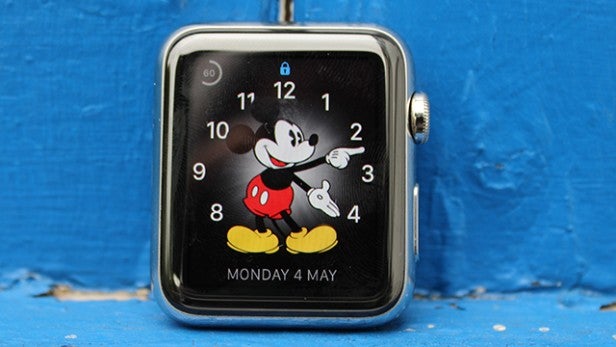
Apple Watch vs Android Wear: Design and User Interface
One of the most attractive features of Android Wear is the Google Now-inspired user interface. It’s the same clean, card-based look used for the intelligent virtual assistant on phones and tablets, which is a sensible fit for small displays. However, as good as it looks on a G Watch R and the rest, it still needs some tweaking. Android Wear doesn’t have multiple home screens or app folders, so it doesn’t deliver the same experience as Android on a phone or a tablet.
The Apple Watch employs a custom user interface too, so it’s not simply iOS 8 shrunk down to fit a small screen. All of the apps live on the main home screen, so you don’t have dig around in the settings or use voice search to find them like you do on Android Wear. There’s also a drop down notification bar and a Control Center you can view from swiping up on the touchscreen.
SEE ALSO: Best Apple Watch apps
Apple Watch vs Android Wear: Controls
Android Wear uses many of the same gestures you use on your smartphone, so you can swipe and tap to interact, although there’s no pinch and zoom or multi-touch support right now. Voice commands are essential to navigation. Yes, you need to talk to your wrist. Say the words ‘Okay, Google’ and your watch will be ready for your question, such as how to get to the museum or how many ‘Police Academy’ films have been made. You can also reply to messages in this manner.
Apple doesn’t place as much importance on voice control, but does include similar gestures and has built-in Siri support. You can swipe to navigate and tap to launch apps, while raising your wrist will let you view notifications. The Glances feature lets you swipe from the bottom of the screen to see a stream of widgets pulled in from your Watch apps, and Siri enables you to quickly reply to texts. Force Touch allows you to customise watch faces, while there’s also a physical button for contacts.
Where it differs greatly from Android Wear is the use of what Apple calls the ‘Digital Crown’. This is the physical dial on the side of the watch. It lets you zoom, scroll, head to the home screen or fire up Siri, and is particularly handy because it allows you to see the entire screen while you use it. However, the Apple Watch is still tougher to get your head around than Android Wear watches, and feels a little chaotic and unintuitive – very much a first-generation product.
SEE ALSO: iPhone 6 vs iPhone 5S
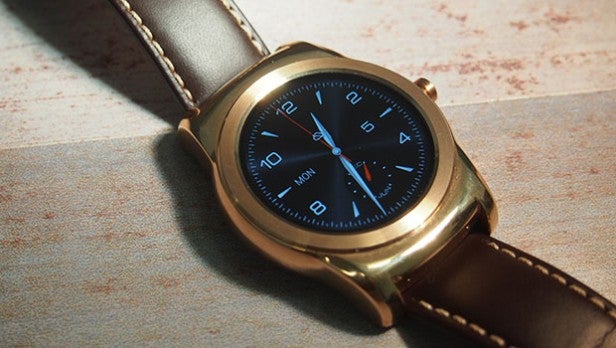
Apple Watch vs Android Wear: Features
Android Wear’s key features are driven by your phone, along with Google Now and Google Voice Search. Android Wear only works with Android devices too. The likes of the Moto 360 and the Samsung Gear Live still rely on your smartphone to get the optimum experience because they’re essentially companion devices. That means your phone does the hard work of harnessing location data and pulling in notifications from apps like Twitter or Facebook, and feeds everything through to your watch over a Bluetooth or Wi-Fi connection.
Google recently rolled out the Android 5.0 Lollipop update, which brings offline music playback and GPS support to smartwatches. Since the Sony Smartwatch 3 actually include GPS technology, you don’t necessarily have to be tied to your smartphone all the time.
Similarly, you need to own an iPhone in order to use the Apple Watch, and it will only work with the iPhone 5S upwards. iPhone 5 and iPhone 5C users are out of luck. Much like Android Wear watches, the Apple Watch harnesses many of the features available through your smartphone, like GPS and the accelerometer. It also includes NFC, meaning it supports the Apple Pay mobile payments platform, though this still hasn’t made its way over to the UK.
The so-called ‘Taptic Engine’ provides a subtle vibration for notifications, which is also used when making purchases through Apple Pay. One ingenious application of this system is in step-by-step navigation, where Apple claims the feedback will tell which direction you need to turn. It’s a feature that sounds great, but only if it works reliably.
SEE ALSO: iPhone 5S vs Galaxy S5
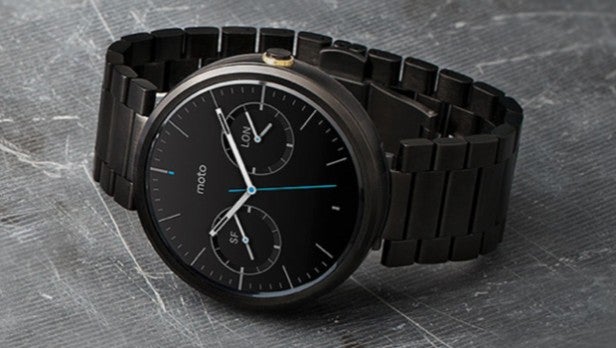
Apple Watch vs Android Wear: Apps
There’s a dedicated section in the Google Play store available through the Android Wear application on your phone, which you need to install in the first place to set the watch up. The Android Wear app store is growing, but makes a good start with a diverse collection of first- and third-party apps, including favourites like Duolingo and RunKeeper. However, they’re all pared down versions of the smartphone apps, and are therefore not as nice to use.
The official number of Apple Watch apps available from day one was around the 3,000 mark, and the collection is growing by the week. You can download these through the Watch app on your iPhone, where you can also control the apps that are displayed on your Apple Watch home screen. Again, there are loads of popular apps to choose from, including Uber and Instagram. Unfortunately, many of these are slow or buggy.
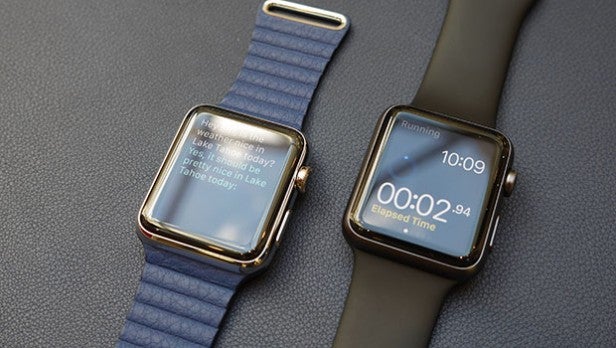
Apple Watch vs Android Wear: Health and Fitness
Fitness is a big play for Google with the introduction of its Google Fit platform. Depending on which Android Wear smartwatch you go for, all are capable of taking data from fitness apps and collecting them in the Google Fit application. All of the Android Wear smartwatches currently available include pedometers, though a select few go a step further, with the LG Watch Urbane including an optical heart rate sensor and the Sony Smartwatch 3 squeezing in GPS.
Apple HealthKit is a big part of iOS 8 and, unsurprisingly, there are plenty of fitness features and apps to look forward to on the Apple Watch. At the back of the watch you’ll find an array of sensors, which can read your heart rate and send a vibration to the watch as you raise the intensity of your workout, though you’ll have to rely on your phone’s GPS signal. There’s also a dedicated Fitness and Workout apps to measure calories, duration and distance.
SEE ALSO: What is HealthKit?
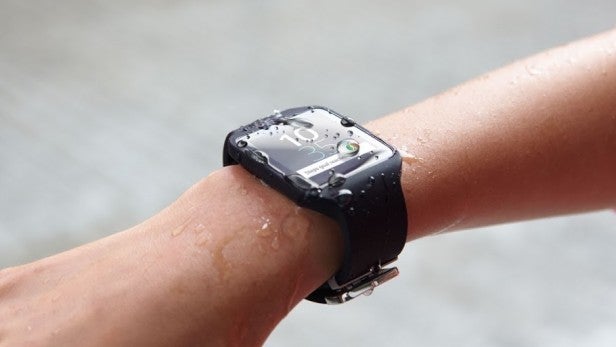
Apple Watch vs Android Wear: Battery Life
This can of course depend on the Android Wear watch you go for, but as things stand, no company making an Android Wear smartwatch has been able to promise or deliver more than a couple of days of battery life. This means you are going to need to charge it the same amount as most smartphones. In most cases, that means every night.
Worst of all, the majority of Android Wear smartwatches require a proprietary charging cradle, so if you stay at someone’s house and forget to take it with you, your timepiece will be nothing more than a watch-shaped bracelet. The Moto 360 includes wireless charging, but that still doesn’t detract from the fact you’ll have to charge it on a nightly basis.
Apple says its smartwatch will manage 18 hours between charges, but if you use it heavily, you’ll struggle to get back home with any charge at all. Worse yet, it absolutely hammers your phone battery too, leaving you with two devices to worry about.
You need the dedicated charging cable to power the Apple Watch back up, though it also supports wireless inductive charging. Still, we’d prefer to see better battery life.
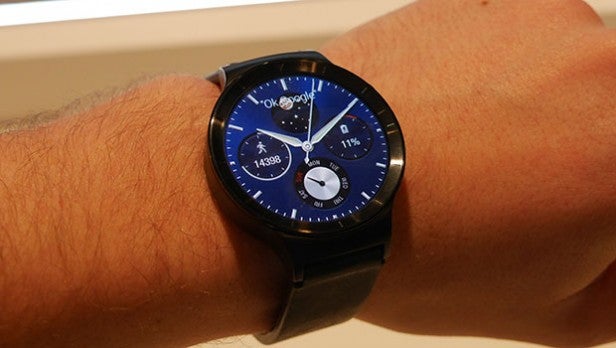
Verdict
As we’ve spoken in great detail about in our Android Wear review, Google’s operating system shows great promise, but it’s hampered by plenty of issues. Disappointingly, the Apple Watch suffers from the same problems.
From a user experience point of view, we favour Android Wear, since it’s just easier to get to grips with. The Apple Watch, meanwhile, feels convoluted and confused. The Digital Crown, Contacts button, Glances, Notifications area and Force Touch are too much to get your head around.
However, the Apple Watch is a great deal better-looking than a number of Android Wear smartwatches, and the importance of design mustn’t be overlooked. Still, it’s not perfect, and the upcoming Huawei Watch is arguably even more visually appealing.
Pricing is a major point to consider too. The Moto 360 costs £180 while the Sony Smartwatch 3 is around the £140 mark. If you go for the stainless steel options, that pushes the cost up a little. The starting price for the entry level Apple Watch Sport is significantly higher, at £299 and goes all the way up to £13,500 for the Apple Watch Edition.
There’s certainly plenty to get excited about for both the Apple Watch and Android Wear, but neither platform can be considered the finished article. Apple’s smartwatch may be the most popular on the market, but right now it looks like Google has the edge.


